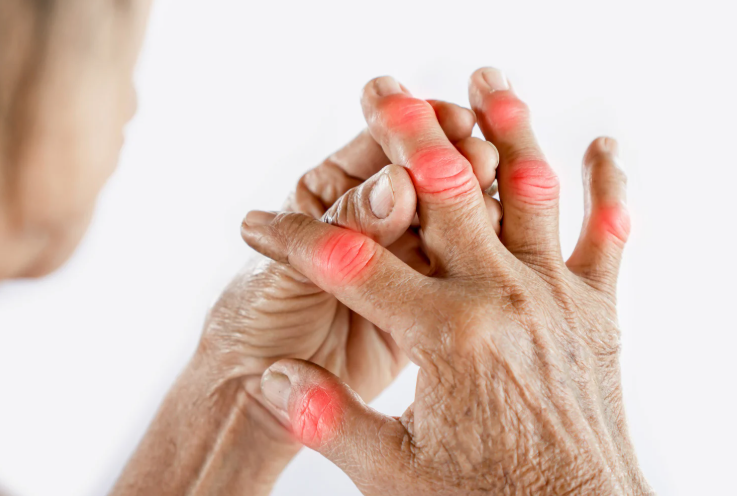
53) The Intervertebral Disc: How Physiotherapy Can Help Annihilate Pain
Your intervertebral discs are like shock absorbers for your spine—but when they’re injured, pain and stiffness can really set in. In this blog, we’ll unpack what these discs actually do, how injuries occur, and most importantly, how physio can get you moving again. If you’ve got back pain, keep reading—help is at hand.

The Unsung Heroes of Your Spine: Intervertebral Discs
Intervertebral discs often fly under the radar—until something goes wrong. These tough, rubbery cushions sit between each vertebra in your spine, helping with flexibility, absorbing shock, and protecting your spinal cord. Without them, everyday movements like bending, twisting, or even sitting would be painful and jarring.
Each intervertebral disc has two parts:
- Nucleus Pulposus – the soft, jelly-like centre.
- Annulus Fibrosus – the tough outer layer made of collagen fibres.
These structures work together to distribute pressure evenly and allow controlled movement between vertebrae. But just like tyres on a car, they wear down over time—or can be damaged suddenly.
Common Intervertebral Disc Problems
There are a few types of intervertebral disc injuries that we see regularly in clinic:
1. Disc Bulge
An intervertebral disc bulge occurs when the outer layer weakens and the nucleus pushes outward, but doesn’t fully rupture. This can press on nearby nerves, causing back pain, or pain down the leg (sciatica). To learn more about Sciatica, CLICK HERE.
2. Disc Herniation (Slipped Disc)
More severe than a bulge, a herniated disc happens when the nucleus actually breaks through the annulus. This often causes sharp pain, numbness, tingling, or weakness in the limbs, depending on where the disc is located.
3. Degenerative Disc Disease
This isn’t actually a disease—it’s just the term used when discs start to break down due to ageing or repetitive strain. Discs can flatten, dry out, or crack, leading to reduced shock absorption and increased stiffness or instability in the spine.
4. Disc Desiccation
A fancy term for dried-out discs—usually seen on MRI scans in older adults or those with chronic spinal loading. Not always painful, but it can increase your risk of other spinal issues.
What Causes Intervertebral Disc Injuries?
There are a few usual suspects:
- Poor posture (especially slouching at the desk or couch)
- Lifting heavy objects with bad technique
- Repetitive strain or vibration (e.g. tradies or truck drivers)
- Sedentary lifestyle
- Sudden trauma (falls, car accidents, or awkward twists)
- Ageing and genetic predisposition
The good news? Most disc-related problems do not require surgery—and that’s where physiotherapy comes in.

How Physiotherapy Can Help
Physio treatment is tailored to each person depending on the severity of the disc issue and what symptoms you’re experiencing. Here’s what we typically use in clinic:
✅ Comprehensive Assessment
We’ll look at your posture, spinal mobility, nerve tension, muscle strength, and biomechanics. Sometimes disc pain is misdiagnosed—so we make sure we’ve got the full picture.
✅ Pain Management Techniques
This could include manual therapy, dry needling, taping, or gentle joint mobilisation to ease pain and reduce muscle spasm.
✅ Neural Gliding Exercises
If you’re experiencing nerve symptoms (like pins and needles or weakness), we use specific exercises to mobilise the nerves and reduce irritation—particularly useful for sciatica caused by a herniated disc.
✅ Core Strengthening
A strong core supports your spine and reduces pressure on the discs. We’ll teach you how to activate deep abdominal and back muscles to improve control and reduce re-injury risk.
✅ Education and Ergonomic Advice
Understanding why your disc flared up is crucial. We’ll cover lifting techniques, desk set-up, and daily movement habits that can reduce future strain.
✅ Progressive Exercise Rehab
As pain improves, we move you into guided exercise to build back strength, mobility and confidence. This might include Pilates, gym-based rehab, or hydrotherapy depending on your needs.

Real Patient Story: James, 39, fromReal Patient Story: Amanda, 42, from Frenchs Forest
Amanda, a 42-year-old office manager from Frenchs Forest, came to our clinic complaining of neck pain radiating into her right shoulder and down her arm, with tingling in her fingers. She’d been working longer hours at her desk recently, often hunching over her laptop. An MRI confirmed a C6/C7 disc bulge, pressing on a nearby nerve root.
At first, she was understandably worried—especially when her GP mentioned a potential neurosurgeon referral. But she wanted to explore conservative options before even considering anything invasive.
We started Amanda on a focused physiotherapy plan that included:
- Postural correction and ergonomic advice for her workstation setup
- Manual therapy and soft tissue release for tight cervical and upper thoracic muscles
- Cervical retraction and nerve gliding exercises to reduce nerve root irritation
- Targeted deep neck flexor strengthening to offload stress on the cervical discs
After just three sessions, Amanda noticed a significant reduction in arm tingling and improved neck movement. By session eight, her nerve symptoms had resolved completely. She now keeps her neck strong with weekly Pilates at the clinic and hasn’t had a flare-up in over six months.
This is a great example of how early physio intervention for cervical disc injuries can prevent the need for surgery—and get you confidently back to life, pain-free.
What Happens If You Ignore a Disc Injury?
Letting a disc injury linger without treatment can lead to:
- Ongoing nerve irritation
- Muscle wasting or weakness
- Chronic pain
- Reduced mobility and stiffness
- Reduced quality of life and ability to work or exercise
The longer it drags on, the more deconditioned you can become—which makes rehab harder down the track.
When Should You See a Physio?
Not sure if your back pain is disc-related? Come and see us if you’re experiencing:
- Pain radiating down your arm or leg
- Tingling, numbness, or weakness
- Difficulty bending or twisting
- Pain that’s worse with sitting or sneezing
- Back pain that’s not improving with rest
Physios are trained to assess, diagnose, and manage spinal injuries—including intervertebral disc issues. We can also refer for imaging or liaise with your GP or specialist if needed.
Staying Disc-Healthy: Top Tips
Here’s what you can do to look after your discs long-term:
✅ Move regularly – Sitting too long is brutal on the spine.
✅ Lift with your legs, not your back – And avoid twisting under load.
✅ Strengthen your core – Think Pilates or functional strength training.
✅ Improve posture – Particularly if you work at a desk.
✅ Stay hydrated and active – Discs need movement and water to stay healthy.
Final Thoughts: Power Up Your Spine with Physio
Your intervertebral discs play a huge role in your spinal health—but they’re often taken for granted. When things go wrong, the right physiotherapy can be the difference between months of ongoing pain or a return to doing what you love.
We’ve helped countless patients get on top of their disc injuries, and we can help you too.
Give us a call today on 9806 3077, or book online, just CLICK HERE.



